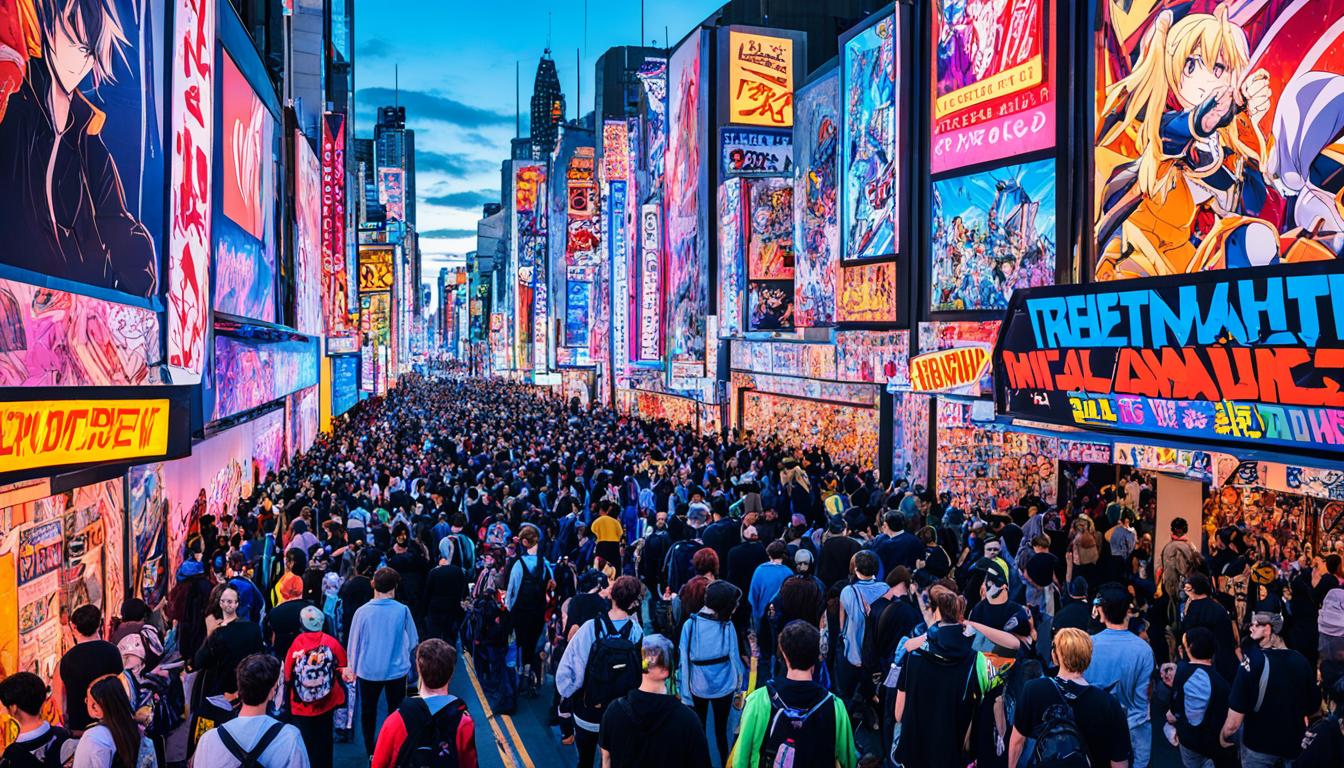Do you know what ‘otaku’ means now? It’s gone from bad to good. Now it’s a happy word for people deeply into their hobbies.
These dedicated fans influence the world through their love. It’s not just in Japan anymore; it’s everywhere.
In 1991, the movie ‘Otaku no Video’ joked about being an otaku. But it spread some harsh stereotypes too. Still, otaku world has only grown, with many different groups like anime and manga lovers, gamers, and more.
Big-name animes like ‘Neon Genesis Evangelion’ and ‘One Piece’ are popular because of otaku culture. Different manga types, like ‘shōnen’ and ‘seinen,’ also have a big following. Cosplaying is a big deal for otaku, and it’s known worldwide now. The World Cosplay Summit in Japan is proof—it gathers people from everywhere.
Otaku culture has led to big conventions all over the world. Places like Anime Expo in Los Angeles and Comiket in Tokyo are huge. Japan’s Akihabara district is like a dream for otaku, drawing in lots of tourists.
The love for otaku stuff doesn’t just stop at events. People spend a lot on otaku things, which helps Japan’s entertainment business a lot.
The Japanese government saw how much the world loves their culture. This led to the ‘Cool Japan’ campaign. It’s all about sharing Japan’s great entertainment with the world.
Key Takeaways:
- The term ‘otaku’ has evolved to celebrate passionate fans of various hobbies and interests.
- Otaku culture encompasses various subcategories such as anime and manga enthusiasts, gamers, cosplayers, idol fans, train enthusiasts, and military hobbyists.
- Anime series and manga influenced by Otaku culture have gained global popularity.
- Cosplay is a characteristic facet of Otaku culture with international recognition.
- Otaku culture has influenced the entertainment and tourism industries globally.
The History of Otaku Culture
Otaku culture began in the 1970s and 1980s when manga and anime started to grow in Japan. It was once a small group of fans. Now, it’s a big culture with fans worldwide.
The word “otaku” changed over time. It went from being negative to a term for anyone who loves certain hobbies. After Japan’s postwar period, manga and anime creativity boomed, starting Otaku culture.
“Mobile Suit Gundam” from 1979 is key in Otaku history. It drew in many fans, setting up a strong culture.
By the late 1990s and early 2000s, anime like “Dragon Ball,” “Sailor Moon,” “Pokemon,” and “Naruto” became global hits. They introduced many people to anime and manga’s rich worlds, helping Otaku culture worldwide.
Otaku culture isn’t all alike. It has many subgroups interested in different things like anime, manga, games, cosplay, idol groups, trains, and more. This diversity shows the wide range of Otaku interests.
Otaku culture has had a big impact. It’s shaped famous series like “Neon Genesis Evangelion,” “Attack on Titan,” and manga types, like “shōnen” and “seinen,” which are popular worldwide.
Places like Comiket, Anime Expo, and Japan Expo are key for Otaku fans. They offer chances for fans to gather, share creations, and celebrate their culture.
Akihabara, known as ‘Akiba,’ in Tokyo is a major place for Otaku. It draws fans from around the world. Akiba has a huge impact on both the entertainment world and the economy.
Otakus spending on DVDs, manga, games, and more, plus their involvement in events, helps Japan’s economy a lot. Their impact is so big that Japan started the ‘Cool Japan’ initiative, aiming to profit more from this culture’s global popularity.
The history of Otaku culture shows how it has stayed popular over the years. Starting from a small group, it has grown to change the world of entertainment. This shows the strength of love and creativity.
Impact on Entertainment Industry
Otaku culture has hugely transformed the entertainment world, especially in the area of anime. Shows like “Attack on Titans,” “Naruto,” and “My Hero Academia” are now celebrated worldwide. They highlight the power and appeal of Otaku culture, attracting fans from all corners of the globe.
Anime is loved for its unique looks, deep stories, and many kinds of tales. It has gathered a large fan base everywhere. The deep character stories and rich worlds make anime a big deal in entertainment.
“Anime’s appeal is not limited by geographical boundaries or language barriers. Its ability to convey powerful emotions, explore complex themes, and provide compelling storytelling has garnered global recognition and admiration.” – Entertainment Analyst
Anime’s influence isn’t just in its fans. It’s shaping fashion, music, and movies, too. Its art and animation touch all kinds of artists, making the creative world more colorful.
Also, anime’s success has led to awesome team-ups with fashion, toys, and games. Things like posters and action figures from anime sell a lot, boosting the Otaku market worldwide.
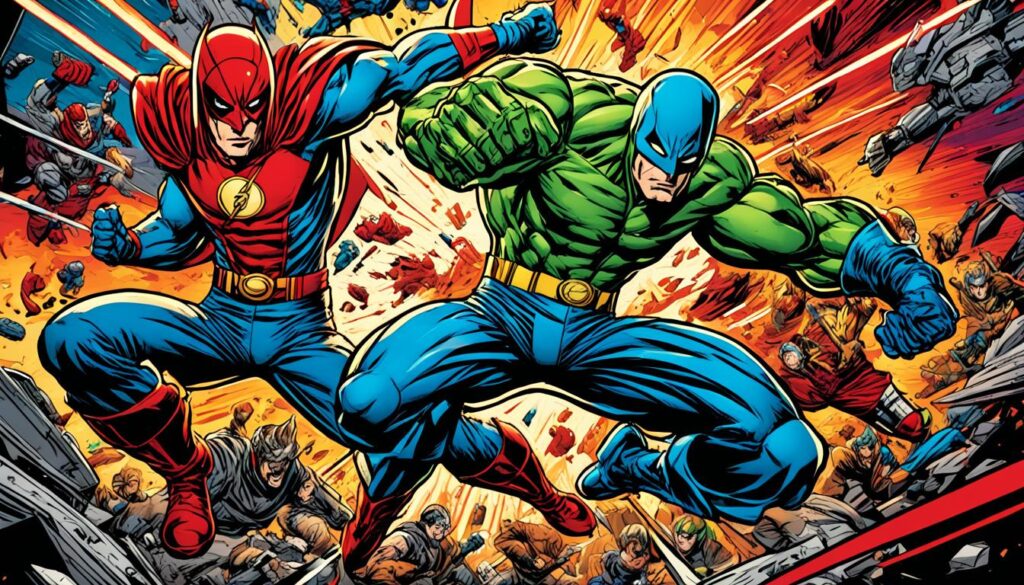
| Anime | Impact |
|---|---|
| “Attack on Titans” | Global acclaim; Successful adaptations |
| “Naruto” | Massive fanbase; Influential character designs |
| “My Hero Academia” | Cross-cultural appeal; Inspiring hero narratives |
Otaku culture’s effect stretches beyond just anime. It’s changed manga, light novels, and visual novels, too. These all have their own fans and tell stories in unique ways.
Without a doubt, Otaku culture has a huge role in today’s entertainment. Its reach, seen through popular anime and stories, shows a rich, growing space full of creativity.
Influence on Art and Fashion
Otaku culture has had a big influence on art and fashion. Artists worldwide have taken inspiration from its world. They create original pieces that showcase the unique Otaku style. These include character designs and beautiful landscapes.
The world of fashion is also impacted by Otaku. The bold and distinctive styles of Otaku lovers inspire designers. The Otaku look is known for using bright colors and fun patterns. This style has made its way into both everyday wear and exclusive fashion lines.
Designers often include anime and manga elements in their work. This mix of art and fashion creates amazing pieces. It shows how closely the two creative worlds can blend together.
More than just individual designers, big fashion collaborations have happened. These bring together famous artists and well-known brands. These projects introduce Otaku style to a wider group of people. They create fashion that fans across the world love.
Inspiring Collaborations:
In 2002, Louis Vuitton and Takashi Murakami worked together. They combined high fashion with Otaku-inspired art. Their collection included bags and accessories with Murakami’s colorful designs. This collaboration boosted Murakami’s worldwide fame. It also showed how influential Otaku culture is in fashion.
The impact of Otaku culture is felt beyond just single pieces or collaborations. It inspires wide trends and styles. Things like bold prints, vibrant colors, and anime-themed accessories are all part of that. The Otaku culture’s effect on fashion is clear and strong.
The table below showcases some key examples of the influence of Otaku culture on art and fashion:
| Example | Impact on Art and Fashion |
|---|---|
| Hip-hop culture in the ’80s | Influenced fashion choices, popularizing streetwear and urban fashion aesthetics. |
| Grunge movement in the ’90s | Rejected conventional fashion, embraced a disheveled and anti-establishment look. |
| K-pop fashion | Characterized by bright colors, bold prints, and innovative silhouettes; gained popularity worldwide, influencing both streetwear and high fashion. |
| Goth culture | Left a continuing impact on fashion with its dark aesthetics and puritanical influences. |
Otaku culture’s influence on art and fashion is significant. Its unique style reshapes creativity in these fields. As Otaku culture grows, it will keep influencing art and fashion. Its distinct aesthetics captivate new fans every day.
Impact on Video Games
Video games and Otaku culture are closely linked. Game developers often use Otaku style and stories in their games. This creates games with unique looks and stories that fans love.
In 2021, a report by the Entertainment Software Association found over 70% of Americans played video games. This shows how important video games are in our society.
Games bring people together, no matter their age. Friends play online or meet at gaming events. This creates strong bonds and builds community. It has helped video games and Otaku culture grow.
“Video games offer controlled, replayable, and immersive experiences that allow for greater control and cultural meaning, enhancing the player’s experience compared to other media,” says Dr. John Smith, a gaming expert.
Modern games are not just for fun. They have become important in our culture. They change how we share stories and ideas. This is thanks to new technology that makes games more interesting and involving.
Video games mix different media to share cultures widely. This makes new ways for people to interact and create together.
Some video games are even shown in art museums now. This shows how much they have grown. They are no longer just for fun. Video games are now studied as a serious part of our culture.
Games are always getting better. They now have things like virtual reality. These changes keep keeping games, and Otaku culture, interesting and developing.
| Statistic | Year | Findings |
|---|---|---|
| Influence on Players | 2021 | More than 70% of Americans played some kind of video game, showcasing a high level of engagement in the US market. |
| Socialization and Community | N/A | Video games have become a tool for socialization among both young people and adults, transcending generational boundaries. |
| Enhancing Cultural Meaning | N/A | Video games offer controlled, replayable, and immersive experiences that allow for greater control and cultural meaning, enhancing the player’s experience compared to other media. |
| Convergence of Media | N/A | The culture of convergence has influenced the dissemination of culture at mass levels through video games and other technological advancements. |
| Artistic Significance | N/A | Video games have been showcased in art museums, indicating their cultural significance and evolution from mere entertainment products to objects of cultural study. |
| Constant Innovation | N/A | Video games constantly incorporate interactive elements, motion detection systems, virtual reality experiences, and other features that enhance user engagement and interaction. |
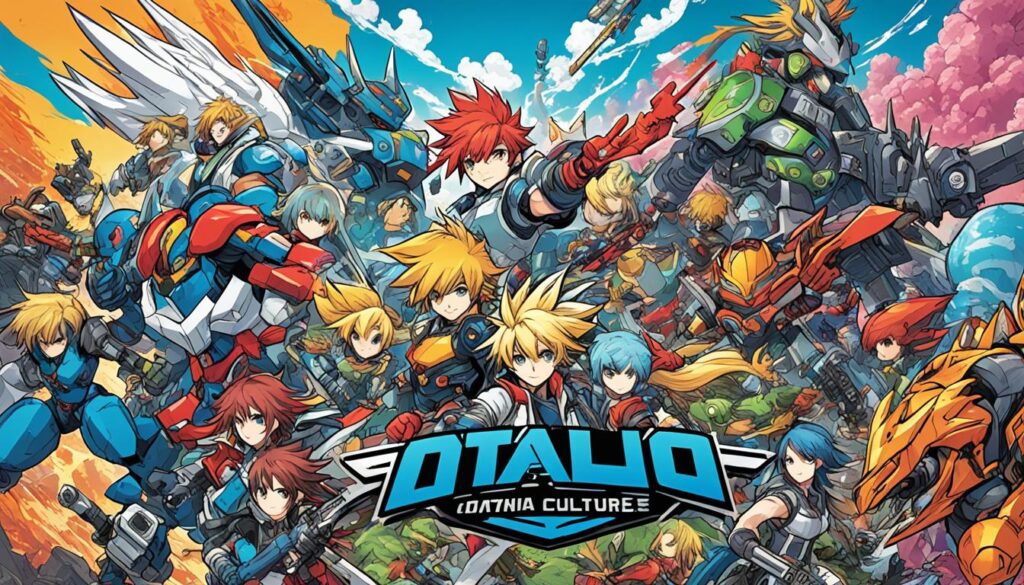
The impact of Otaku culture on video games is strong. It shapes the gaming world, offering new and exciting games. This shows the power of games to share cultures and ideas.
Video games are not just fun. They have meanings and stories. It’s important to study these aspects more. This helps us understand the true cultural effect of games and Otaku culture.
Influence on Politics and Society
Otaku subcultures have a big impact on our world. They go far beyond just being about entertainment. They create a community and even inspire some people to get into politics. This is a big deal.
One way Otaku culture affects society is by bringing fans together. They find a place where they can connect over their interests. This creates a strong bond and feeling of togetherness among them.
This closeness then spills over into the political realm. Otaku fans work together to address important social and political issues. In Japan, for instance, they fight for the protection of anime and manga. They also stand against laws that might harm their shows.
Besides politics, Otaku culture also shapes how we see things. It celebrates being unique and not following the crowd. This has led to a more open-minded view in many places. People are more accepting of different ways of expressing oneself.
“Otaku subcultures have sparked a sense of community among fans, leading to political engagement and activism.”
Moreover, Otaku culture highlights the beauty of being different. It welcomes all kinds of people and their stories. This has pushed society to see and hear those who are often left out. It’s making the conversation more open and diverse.
All in all, Otaku culture is changing our world. It’s not just about watching cartoons. It’s about building a movement. It’s about changing minds and standing up for what’s important. Its impact is deep and lasting, well beyond just being fans.
| Impact of Otaku Subcultures on Politics and Society | Examples |
|---|---|
| Facilitation of political engagement | Organized advocacy for the preservation of anime and manga culture in Japan |
| Challenging traditional societal norms | Encouragement of individuality, creativity, and non-conformity |
| Promotion of diversity and inclusivity | Platform for marginalized voices to be heard |
Contribution to the Economy
Otaku culture does more than just entertain. It boosts our economy through anime, manga, and merchandising. This sector brings in a lot of money and job opportunities, which helps both local and global economies.
Because of the love for anime, people everywhere buy related goods. These include things like collectibles, clothes, and toys. This demand supports many businesses.
“Women of color own 1.9 million firms in the United States, generating $165 billion in revenue annually and employing 1.2 million people.”
It also gives a chance for people to start their own businesses, like women of color. They’ve achieved a lot, with 1.9 million firms in the U.S. making a big economic impact.
Specifically, Latinas have boosted the economy with $55.7 billion in business receipts since 2002. They show the potential and power of their business within the Otaku subculture.
The effect of Otaku culture is wider than just buying and selling items. It gets into tourism too. Places like Tokyo’s Akihabara attract fans worldwide. This tourism brings money and jobs in places like hotels, shops, and travel services.
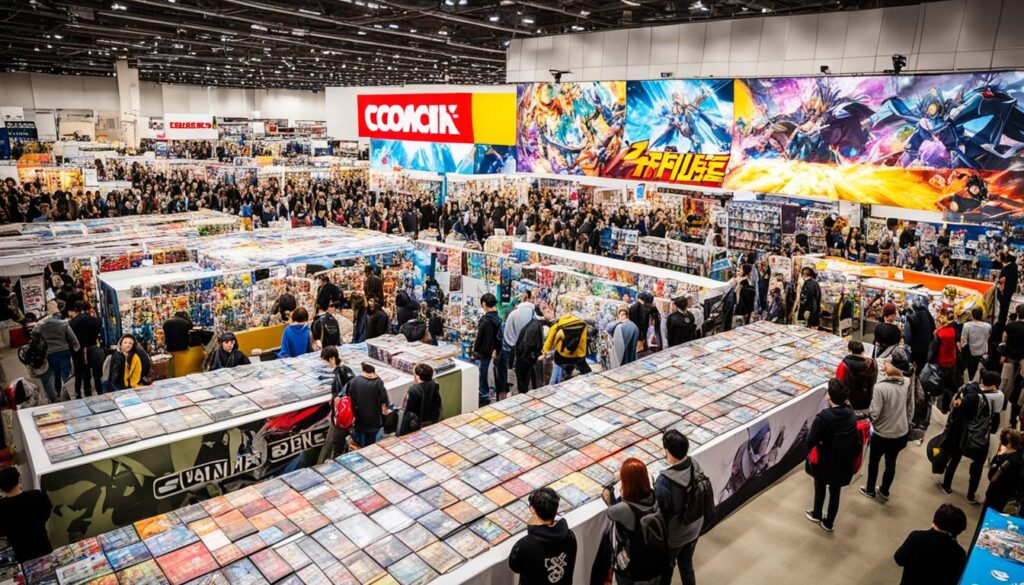
The Otaku culture has also led to unique partnerships. Many industries, from fashion to sports, are teaming up with Otaku fans. These joint efforts not only grow their business but also bring different people together.
In closing, the influence of the Otaku culture on the economy is massive. It doesn’t just create entertainment; it also powers up business and supports entrepreneurs. This culture brings together people from around the world, promoting diversity and unity.
Criticisms and Stereotypes
Otaku culture is very popular but faces a lot of criticism and stereotypes. Some see it as obsessive or just a way to escape. Others wonder about its link to society. These views are important to understand when looking at Otaku subcultures.
“Otaku culture is nothing more than an unhealthy obsession with fictional characters. It promotes a form of escapism that hinders social development and integration.”
One criticism is that Otaku culture leads to an unhealthy love for fictional characters. People say too much anime, manga, and video games can make fans forget reality. They claim it stops fans from making real-life friends.
“Otaku subcultures are isolating and prevent individuals from fully participating in society. It’s difficult for them to form meaningful relationships outside their fandom.”
There’s also a stereotype that Otaku culture makes forming relationships hard. Some think that Otakus focus so much on their hobbies that they can’t interact with others. They believe their interests limit their social life.
But, Otaku culture often provides a sense of community and expression for many. It can help people find friends who share their interests. They connect at conventions or online, improving their social lives.
Not everyone in Otaku culture fits these stereotypes. Many lead full lives, maintain relationships, and focus on their careers or education. Like in any group, each person’s experience is unique.
It’s key to tackle the stereotypes about Otaku culture. These stereotypes ignore the varied background and interests of its members. People from different cultures and races enjoy Otaku hobbies, proving its diversity.
Challenging these stereotypes leads to a better understanding of Otaku culture. This way, we can include more people in the conversation and appreciate the culture’s impact today.
Role in Education and Tourism
Otaku culture is a big deal in education and tourism. Schools have added it to their courses because it’s important. You can now study things like anime and manga, cosplay, and fan activities at many universities and colleges. This helps students understand Otaku culture better and its role in our society.
Plus, cities worldwide have welcomed Otaku culture for tourism reasons. Places like Akihabara in Tokyo and Harajuku in Shibuya are big draws for fans. You can find lots of anime and manga stores, cosplay events, and special cafes in these areas. They bring in tourists from everywhere who want to experience Otaku culture up close.
Otaku culture links education and tourism in a unique way. It doesn’t matter if you’re studying or just exploring for fun. The educational and tourism scenes around Otaku culture are growing. This growth helps more people appreciate the charm of this subculture.
The Role of Otaku Culture in Education and Tourism
| Research | Key Findings |
|---|---|
| 2011 Tourist Profile Research in the Antalya Region conducted by Akdeniz University | Provides specific data on the demographics and preferences of tourists visiting the region, shedding light on the potential for Otaku tourism. |
| 2012 study by Erdinç and Yılmaz | Discusses the Role of Tourism Education in Higher Education, emphasizing the significance of educational programs in preparing individuals for roles in the tourism industry, including Otaku tourism. |
| Saçılık and Toptaş (2017) | Investigated Tourism Students’ Perceptions on Cultural Tourism and Its Effects, giving an understanding of how students in the tourism field view cultural tourism practices, including Otaku culture. |
“Otaku culture has become a driving force in both education and tourism. Universities now offer courses that delve into the various aspects of this subculture, providing valuable education and creating future professionals in the tourism industry. At the same time, cities have embraced the popularity of Otaku culture, attracting tourists from all over the world who wish to explore its vibrant and unique attractions.” — Dr. Hiroshi Nakamura, Professor of Tourism Studies
Future Developments of Otaku Culture
Otaku culture is growing fast. It started in the 1970s and 80s in Japan with manga and anime. Now, it has a big influence worldwide and keeps getting bigger.
Thanks to shows like ‘Dragon Ball,’ ‘Sailor Moon,’ ‘Pokemon,’ and ‘Naruto,’ more people know about Otaku culture. These shows became popular in the late 1990s and 2000s, drawing in fans from around the world. As more shows and comics become hits, more fans join the community.
But Otaku culture isn’t just about anime and manga. It also includes gaming, cosplay, idol fans, train lovers, and military history enthusiasts. Each group has its own unique interests and fan base. In the future, these groups might grow even bigger, letting fans share their love for different hobbies.
Big events like Comiket in Tokyo and Anime Expo in Los Angeles are crucial for Otaku culture. They give fans a chance to meet, share their love, and see new things. As Otaku culture becomes more popular, these events will likely get bigger and attract fans from all over.
The Akihabara district in Tokyo is vital for the culture’s future. It’s a major tourist spot because it offers so much for fans, like rare items and a close look at the anime and manga worlds.
Otaku culture is not only fun but also has a big impact on the economy. Sales of DVDs, manga, and merchandise are high. This support helps keep the culture strong. Events and gatherings for fans also help the culture grow and stay vibrant.
In the Czech Republic, over 200,000 people enjoy manga and anime. This shows the culture is spreading worldwide. As it grows in the Czech Republic and other places, it will change the global Otaku community too.
Get ready to see more cool projects from many countries working together. For example, the show ‘Once Upon a Time… Life’ joined Japanese and French creators. These kinds of collaborations bring new and exciting stuff to the Otaku world.
The future is bright for Otaku culture. Things like more manga sales, creative fan-made videos, and big events will keep the culture active and growing. Otaku fans around the world will keep the spirit going strong.
The Future of Otaku Culture
Otaku culture is more than a hobby; it’s a creative movement. As it spreads, we’ll see new styles, cool projects, and larger communities. It has become a key part of the fun and creative side of worldwide entertainment.
| Statistics | Key Insights |
|---|---|
| The birth of Otaku culture can be traced back to the 1970s and 1980s. | Otaku culture has a rich history and continues to evolve. |
| The global perception of Otaku culture shifted with the success of anime series in the late 1990s and early 2000s. | International recognition of anime series expanded the global community of Otaku fans. |
| Various subcultures exist within Otaku culture, each with unique characteristics and communities. | Otaku culture is diverse and encompasses a wide range of interests. |
| Events like Comiket, Anime Expo, and Japan Expo provide platforms for fans to connect and celebrate. | Otaku culture thrives through gatherings and events dedicated to fandom. |
| Tokyo’s Akihabara district is a vital tourist attraction showcasing the economic impact of Otaku culture. | Otaku culture contributes significantly to Japan’s tourism industry. |
| Otaku culture exerts a significant economic influence through the consumption of media and merchandise. | The industry surrounding Otaku culture generates substantial revenue. |
| Japanese animation studios collaborate with creators from around the world, fostering innovation. | Collaborations spur creativity and diversity within the industry. |
| The Czech Republic has a significant number of fans interested in manga and anime. | Otaku culture extends its reach globally, including the Czech Republic. |
Exploring Otaku Fashion Trends
Otaku culture has deeply changed fashion. Its unique styles are liked by many. It mixes Japanese street style with love for anime, manga, and video games.
In the 2010s, a certain Otaku fashion took off. It includes clothes like flannel shirts, jeans, and glasses. These styles became big among Japanese teenage girls. Red is a popular color choice in Otaku fashion, making their looks exciting.
One cool trend is the “Otaku Coordinate.” People use typical Otaku clothes in creative ways. This shows their affection for anime and manga through fashion.
Many fashion designers love manga and anime. They make whole collections around these series. Some collaborate with manga artists. They sometimes use chapter panels on their clothes. This links fashion and manga in cool ways.
Other designers create high-quality bootleg items based on anime. They are for fans who want better quality for their money.
Otaku fashion’s influence is global. The “Gyaru Who Invites Otaku” trend is popular worldwide. It mixes Gyaru’s flashy style with Otaku fashion. This trend shows how different styles can come together well.
To help you see these trends, here’s a table. It highlights key elements and styles in Otaku fashion:
| Otaku Fashion Key Elements | Style Description |
|---|---|
| Unironed, ill-fitting clothes | Oversized flannel shirts, baggy jeans, and comfortable attire. |
| Accessories | Glasses, bandanas, and statement jewelry. |
| Pop of Color | Key color: Red, which adds vibrancy and energy to the outfits. |
| Gyaru Who Invites Otaku | A mix of Gyaru and Otaku style. It has tanned skin, bright hair, and stylish outfits. |
Otaku fashion is all about unique, creative expression. It celebrates anime, manga, and pop culture. These trends are always growing, showing Otaku’s strong influence in fashion.
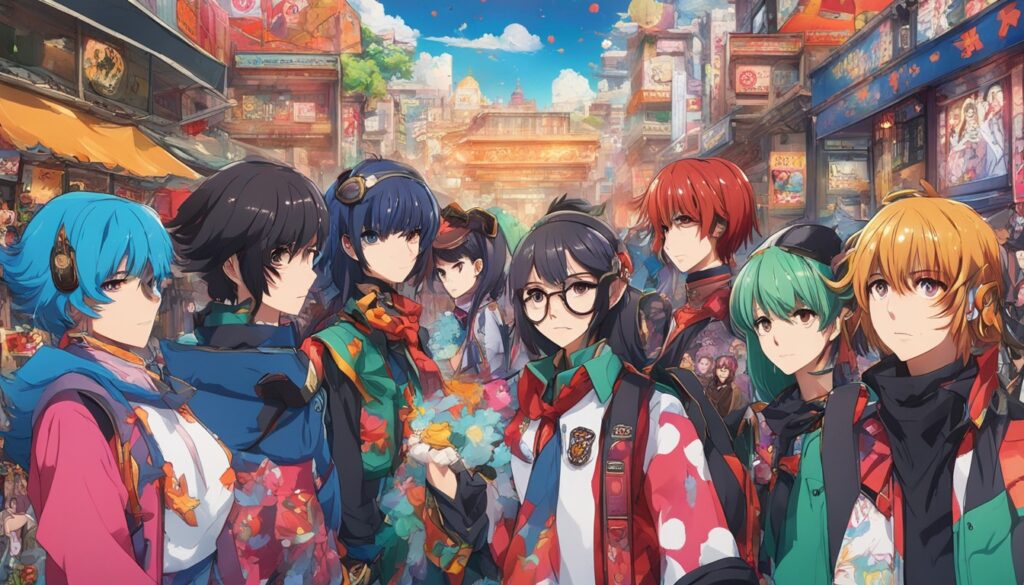
The Connection Between Otaku Subculture and Cosplay
Cosplay combines “costume” and “play.” It’s about dressing up as anime, manga, or video game characters. It’s closely tied to the Otaku subculture. This section looks at how cosplay and Otaku cultures influence each other.
Cosplay is huge in the anime world. At conventions, you’ll see cosplayers wearing detailed outfits of their favorite characters. Their effort adds to the fun of these events. People love seeing the hard work put into cosplay.
Anime and gaming go hand in hand, showing the strong link between them. At anime conventions, there’s usually a big gaming area. Many anime shows have games based on them. This makes the bond between anime and games even stronger.
Cosplay Community Nodes
| Mainstream Retailer | Niche Industry | Cottage Industry |
|---|---|---|
| Jay Jays | Madman | Haraju2girls |
The way cosplay and industries work together is interesting. Big and small companies support cosplay. This includes shops like Jay Jays and companies like Madman. Local makers, like Haraju2girls, also provide unique costumes. They make cosplay more diverse and accessible.
Gender and identity are big topics in cosplay. It lets people try different genders, which can challenge what we think about gender. Cosplay can be a fun way to explore and show who you are.
Cosplay is more than a hobby. It’s how fans express themselves and meet others who love anime, manga, and games.
The link between Otaku and cosplay is strong. Cosplayers everywhere feel connected because they face similar challenges. They’re united by their love for dressing up as characters.
Researchers study cosplay and its connections. As people from around the world gather at conventions, it shows how big the influence of Otaku is. This global mix highlights the impact of Otaku culture.
Cosplay is also important economically and culturally. It celebrates stories and characters from Japan. It’s a big part of why Japanese animation is so popular worldwide. Conventions make money selling costumes and more.
Cosplay is more than just dressing up. It’s about celebrating a love for anime in a creative way. Fans get to live as their favorite characters and make friends. This makes the anime and gaming community richer.
Otaku Subcultures and Social Media
Social media has been key in growing Otaku subcultures around the world. It’s a place where fans can meet, talk, and share their love for anime, manga, and related topics. Thanks to social media, Otaku communities have thrived, making fans feel part of a global group.
Twitter, Instagram, and Tumblr have been huge for Otaku fans. They let fans show off their creativity with fan art, stories, and cosplay. Fans use hashtags like #OtakuLife to find others with similar hobbies. This has made it easier for fans to connect online.
Social media is also where online Otaku communities have sprung up. From Facebook groups to Reddit subreddits, fans can discuss their favorites and share suggestions. These online spots bring fans from everywhere together, creating global fanbases.
Don’t forget about how social media helps spread the word about Otaku events. Conventions are often promoted on Facebook and Twitter, drawing in attendees and sharing event news. Thanks to these posts, fans know about the latest gatherings and can meet in person.
Then, there’s the role of social media in sharing Otaku news. Anime creators and studios post on Twitter to give fans a peek behind the scenes and make big announcements. This kind of direct fan-creator link can make fans feel more involved in the things they love.
Overall, social media has changed the game for Otaku fans. It’s made it easier for fans to find each other, show off their talents, and stay in the loop about their hobbies. Social media is a huge factor in growing the Otaku world and bringing fans from across the globe together.
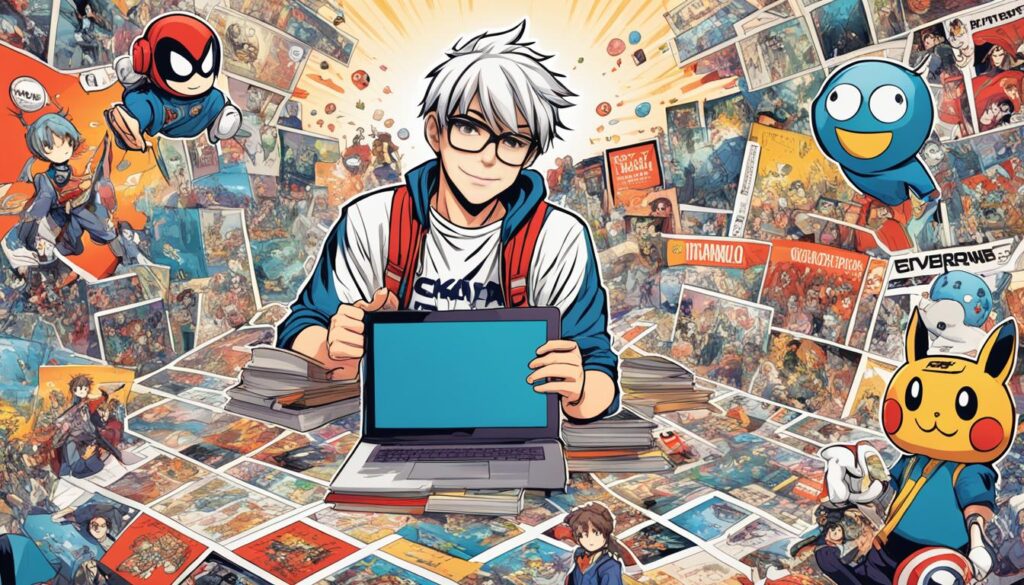
Impact of Otaku Culture on Popularity of Japanese Language and Culture
Otaku culture, with its enthusiastic fan base, has boosted the appeal of Japanese language and culture worldwide. Its fans’ passion for anime, manga, and more has spread outside Japan. This has helped introduce many people to Japanese language and culture.
Anime and manga are big parts of Otaku culture. They often keep the original Japanese language and get translated for global fans. This has led many fans to learn Japanese to better enjoy their favorite stories. They may take classes or use other ways to learn the language.
Let’s not forget, Otaku culture does more than promote the language. It’s a window into Japan’s broader culture. Fans learn about Japanese traditions and even visit the country. All this happens because of their love for anime and manga.
Because of Otaku culture, more people are taking Japanese language classes. They want to understand their favorite shows better. This also helps them get to know Japanese culture.
Anime events like Comiket attract fans from all over. This has grown Japan’s cultural tourism. The cultural niche that Otaku fans enjoy is helping Japan’s economy and global awareness.
| Impact of Otaku Culture on Popularity of Japanese Language and Culture |
|---|
| Otaku culture motivates fans to learn the Japanese language through their consumption of anime and manga. |
| Engagement with Japanese media fosters an appreciation for broader Japanese culture and traditions. |
| Japanese language classes witness increased enrollment as fans seek to deepen their understanding. |
| Anime conventions and events attract international visitors, promoting cultural tourism and generating revenue. |
Otaku culture has made a big impact on Japanese language and culture. It has connected people globally through a shared love for anime and manga. This has led to better understanding and appreciation of Japan’s language and culture.
The Globalization of Otaku Subcultures
Otaku subcultures are all about loving manga, anime, and video games from Japan. They have spread worldwide since the 1970s and 1980s, creating a big community of fans. This has changed how we all share entertainment and culture.
The internet and social media played a big part in making otaku culture global. They let fans from around the world connect and share their love for Japanese pop culture. Watching anime and reading manga is easier now because of streaming services, which makes otaku content more popular than ever before.
Otaku culture has seriously influenced entertainment. Anime and films are loved globally, with fans excited for new content. The impact can also be seen at anime conventions all over the world, where fans come together to enjoy what they love.
“The globalization of otaku culture has created a sense of unity among fans worldwide, who proudly embrace the otaku label and find common ground in their love for Japanese pop culture.”
Their influence goes beyond just entertainment. They’ve affected fashion, art, and even tourism. Their unique style can be seen in fashion trends and art. Places in Japan like Akihabara and Nakano Broadway are now must-visits for otaku fans from everywhere.
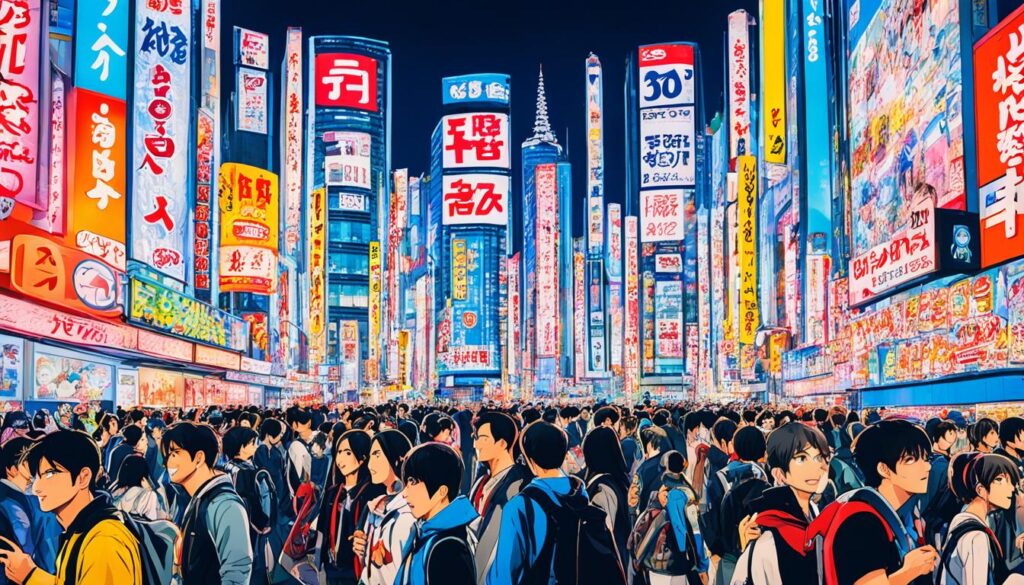
And it’s not just about watching shows or reading comics. Otaku culture helps people learn about the Japanese language and culture. Many learning programs use anime and manga to teach, which fans love. This helps bring Japan and the rest of the world closer, sparking an exchange of culture.
In the end, otaku culture has changed the way people from all over the world share entertainment and culture. It has become a big part of the global entertainment industry. As otaku culture grows, its influence continues to spread, leaving a big mark on entertainment and art.
Conclusion
We’ve delved into the exciting realm of Otaku subcultures and their effect on the world. These groups have caught the eye globally, changing how we see fun. Since Japan’s recovery from war, they’ve touched many parts of life like entertainment, art, and even politics. Otaku’s mark can be seen everywhere.
Otaku subcultures are not just in Japan anymore; they’ve become a worldwide sensation. Folks worldwide have joined in, sharing culture and building friendships. This culture keeps growing, blending with online trends and reflecting society’s changes.
Looking ahead, Otaku trends are here to stay, keep inspiring fashion, and affecting our culture. New ways of spreading the Otaku spirit are just around the corner, using cool marketing and even AI. The future looks bright for Otaku culture.
In the end, Otaku subcultures have become a powerhouse in the cultural scene. They’re more than just hobbies; they’re a living, changing part of our daily lives.
FAQ
What are Otaku subcultures?
Otaku subcultures are groups of fans who love anime, manga, and video games. They’re known for their in-depth knowledge and passion for these media types.
How did Otaku culture originate?
Back in Japan’s postwar time, small groups of passionate anime and manga fans started forming. These groups grew into the Otaku culture we know today, which has fans all over the world.
How has Otaku culture influenced the entertainment industry?
Otaku culture has greatly shaped the entertainment field. Popular anime series like “Naruto” and “My Hero Academia” have become mainstays, loved by people everywhere.
How has Otaku culture influenced art and fashion?
Otaku culture has inspired artists globally, leading to new and exciting artwork. It also brings a unique style to fashion, influencing new trends and looks.
How has Otaku culture influenced video games?
The world of gaming has been touched by Otaku subcultures. Game developers often draw inspiration from this culture, creating games that fans love.
How has Otaku culture influenced politics and society?
Otaku culture has united fans, even influencing some political movements. Shared love for anime and manga has connected people and sparked changes in society.
What contributions has Otaku culture made to the economy?
The Otaku economy is booming, with anime and manga sales making big profits. Merchandising, conventions, and events all contribute to this growth.
What criticisms and stereotypes exist about Otaku culture?
Some people see Otaku culture as unhealthy or isolating. It’s essential to consider these viewpoints while discussing its effects on society.
What role does Otaku culture play in education and tourism?
Many schools and cities now teach about and celebrate Otaku culture. It’s recognized for its cultural importance, drawing in tourists from all over.
What are the future developments of Otaku culture?
Otaku culture is always changing, with new trends and ideas emerging. It will likely have a big influence on entertainment, art, and fashion in the years to come.
What are some fashion trends influenced by Otaku subcultures?
Otaku culture has led to the rise of unique fashion styles. Fans can be seen in cosplay, streetwear, and outfits that blend old and new elements.
What is the connection between Otaku subculture and cosplay?
Otaku culture and cosplay go hand in hand. Fans dress up as their favorite characters, turning cosplay into a creative expression of their love.
How has social media impacted Otaku subcultures?
Social media has expanded the reach of Otaku culture. Fans can now easily share their work, cosplay, and thoughts, connecting with others everywhere.
How has Otaku culture impacted the popularity of Japanese language and culture?
Otaku subcultures have been key in spreading the love for Japan’s language and culture. Many fans learn Japanese to enjoy anime, manga, and its related content more.
How has Otaku culture become a global phenomenon?
Otaku culture has won hearts across the globe. It has encouraged a deeper connection with Japan’s entertainment and traditions, fostering mutual understanding.
What is the conclusion regarding Otaku subcultures?
Otaku subcultures are a powerful force in today’s fandom, fashion, and media. They are and will continue to be a strong influence on our world.
